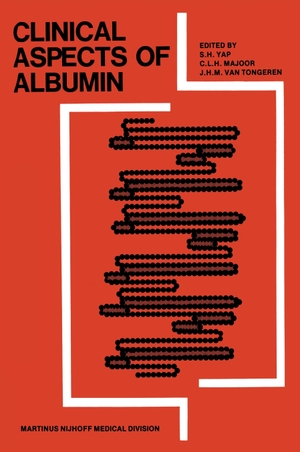
Clinical Aspects of Albumin
- Springer Netherlands
- 2011
- Taschenbuch
- 220 Seiten
- ISBN 9789400997462
Albumin is the most abundant serum protein produced by the liver. In clinical practice the serum level of albumin continues to be used as an important marker of the presence, progress or ofthe improvement of many diseases, even though it is the complex end result of synthesis, degradation a. nd distribution between intra- and extravascular space. The clinical history of albumin began as early as in 1837, when Ancell first recognized "albumen" and noted that this protein is needed for trans port functions, for maintaining fluidity of the vascular system and for the prevention of edema. However, the important physiological properties of serum proteins and their
Mehr
Weniger
zzgl. Versand
in Kürze